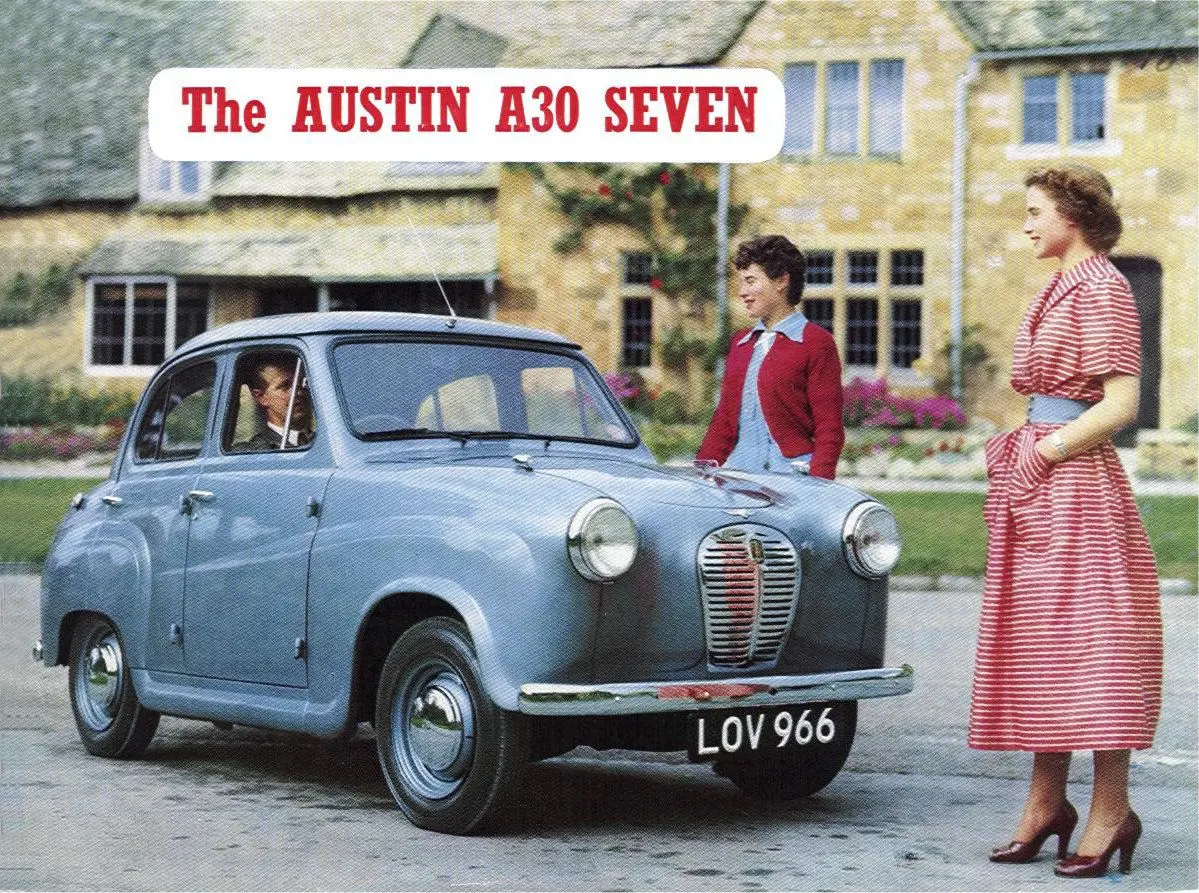THE AUSTIN A30 AT SEVENTY
25 October 2021
The year is 1951, and one of the star attractions of the London Motor Show is the latest small Austin.
Countless visitors to Earls Court marvelled at the ‘chassis less’ construction – a ‘first’ for Longbridge, the smart lines and the new 803cc OHV engine. Here was “The Greatest Achievement in Post-War Motoring” and the only dated aspect appeared to be its name; the A30 Seven.
Full production commenced in May of the following year, The Motor stating it would “exactly fit the bill for many thousands of motorists, both in this country and overseas”. What you gained for £504 0s 10d was a car capable of just under 65 mph, which was more than acceptable for the average trunk road. The fuel consumption was 40-45mpg, an equally important consideration, even if petrol rationing had ended in the previous year.

Few would claim the A30 was well-appointed even by the standards of the time. The sales copy may have boasted of front seats that were “instantly adjustable to one of three positions” and the luxury of ‘foam rubber’ seating, but the equipment list included a single sun visor and no passenger windscreen wiper. The front doors featured counterbalanced drop windows with fixed rear panes at the rear, while even twin stop/tail lights were optional.
However, the Austin had the significant advantage of being the UK’s second cheapest car. It also looked far more contemporary than a Ford Anglia E494A and cost over £60 less than a Morris Minor, as your dealer would doubtless tell you. The Motor thought the A30 “one of the most eagerly awaited cars that has ever been introduced in this country” while Motor Sport noted: “Our outstanding impressions of the current Austin Seven are of an excellent road performance from its very game 800cc ohv engine, accomplished with a high degree of smoothness and lack of fuss, outstandingly good brakes, and very pleasant steering.”
As the decade progressed, the revived Seven badge was largely forgotten, while in October 1953, Austin introduced a two-door version. There was also a De Luxe option, which essentially meant opening rear side windows. A year later, the A could be ordered as a Van or a truly delightful Countryman estate. Longbridge billed the latter as “A Universal Vehicle For Town and Country Business or Pleasure Passengers or Goods”. Meanwhile, the dashboard now featured the now familiar ‘orange segment’ speedometer
September of 1956 saw the entire range replaced by the A35, gaining a 948cc engine and improved transmission with a remote-control lever. Austin had made 223,264 A30s, and they really did fulfil their claim of being “The car that will give untold pleasure to thousands of motorists, old and young”. And so to celebrate the A at seventy here is an unforgettable cinema promotion.
Why choose Lancaster Insurance?
Here at Lancaster, we love classic cars as much as you do and we understand what it takes to protect them for future generations.
We have links with some of the top classic car clubs around the country and some of our policies even offer discounts of up to 25% for club members.
Other benefits of classic car insurance through Lancaster can include:
- Historic rally cover
- Static show cover
- Limited mileage discounts
- Choice of repairer
- 24-hour claims helpline
Give your classic the protection it deserves and get an insurance quote for your classic car today.
